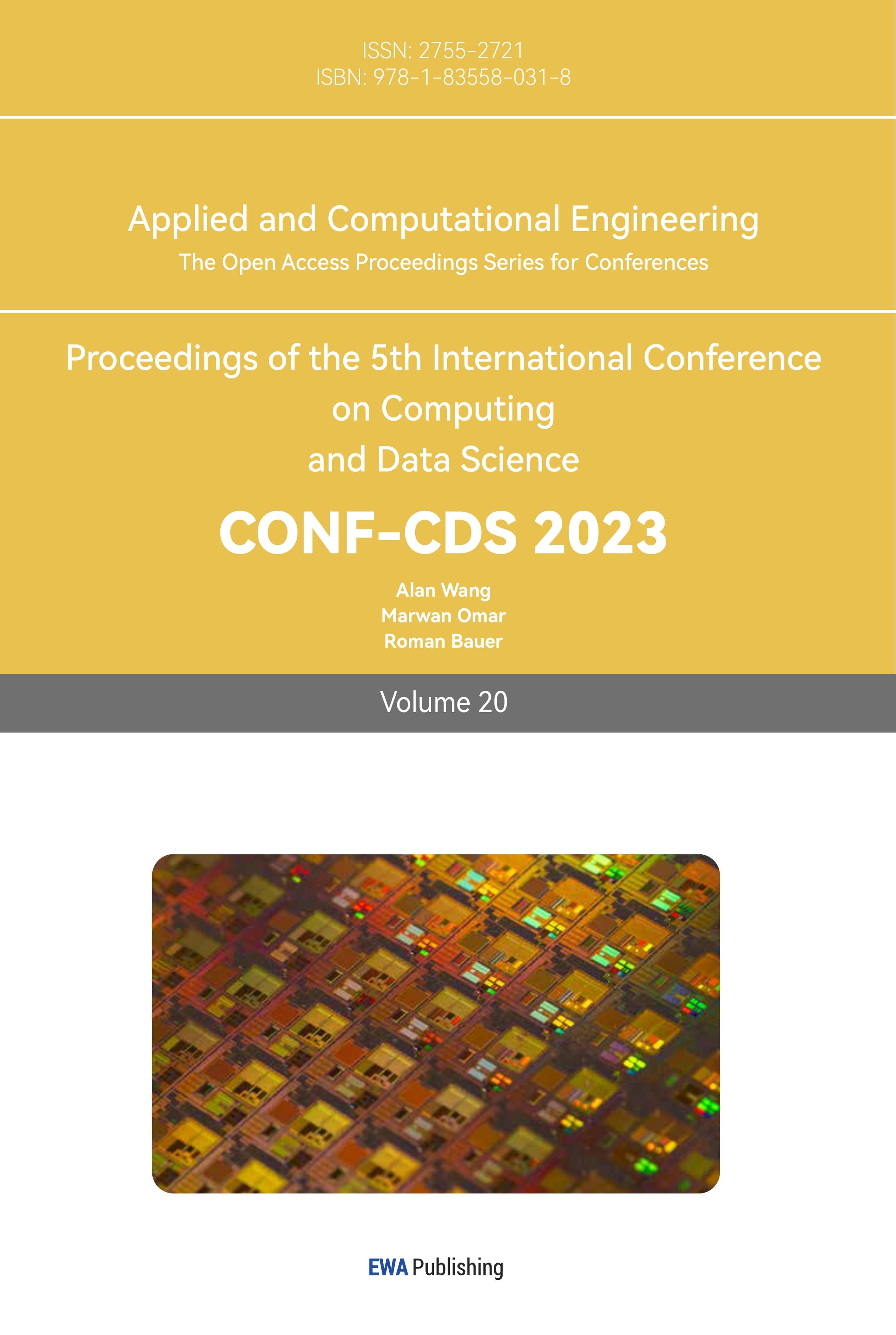References
[1]. Shunzhi, X. (2022). Overview of rumor detection based on Neural Network, Changjiang Information & Communications, 35(01), 53-56.
[2]. Nuo, X, Wei, Z, Keyuan, S, et, al. (2022). Health Rumor Detection based on Pre-Trained Language Model, Journal of Systems Science and Mathematical Sciences, 42(10), 2582-2589.
[3]. Al-Sarem, M., Boulila, W., Al-Harby, M., Qadir, J., & Alsaeedi, A. (2019). Deep learning-based rumor detection on microblogging platforms: a systematic review. IEEE access, 7, 152788-152812.
[4]. Cao, J., Guo, J., Li, X., Jin, Z., Guo, H., & Li, J. (2018). Automatic rumor detection on microblogs: A survey. arXiv preprint arXiv:1807.03505.
[5]. Choi, D., Oh, H., Chun, S., Kwon, T., & Han, J. (2022). Preventing rumor spread with deep learning. Expert Systems with Applications, 197, 116688.
[6]. Song, C., Yang, C., Chen, H., Tu, C., Liu, Z., & Sun, M. (2019). CED: credible early detection of social media rumors. IEEE Transactions on Knowledge and Data Engineering, 33(8), 3035-3047.
[7]. Hossin, M., & Sulaiman, M. N. (2015). A review on evaluation metrics for data classification evaluations. International journal of data mining & knowledge management process, 5(2), 1.
[8]. Luan, Y., & Lin, S. (2019). Research on text classification based on CNN and LSTM. In 2019 IEEE international conference on artificial intelligence and computer applications (ICAICA), 352-355.
[9]. Dong, X., Yu, Z., Cao, W., Shi, Y., & Ma, Q. (2020). A survey on ensemble learning. Frontiers of Computer Science, 14, 241-258.
[10]. Wong, E., Rice, L., & Kolter, J. Z. (2020). Fast is better than free: Revisiting adversarial training. arXiv preprint arXiv:2001.03994.
Cite this article
Huang,B.;Feng,R.;Yuan,J. (2023). Exploiting ensembled neural network model for social platform rumor detection. Applied and Computational Engineering,20,231-239.
Data availability
The datasets used and/or analyzed during the current study will be available from the authors upon reasonable request.
Disclaimer/Publisher's Note
The statements, opinions and data contained in all publications are solely those of the individual author(s) and contributor(s) and not of EWA Publishing and/or the editor(s). EWA Publishing and/or the editor(s) disclaim responsibility for any injury to people or property resulting from any ideas, methods, instructions or products referred to in the content.
About volume
Volume title: Proceedings of the 5th International Conference on Computing and Data Science
© 2024 by the author(s). Licensee EWA Publishing, Oxford, UK. This article is an open access article distributed under the terms and
conditions of the Creative Commons Attribution (CC BY) license. Authors who
publish this series agree to the following terms:
1. Authors retain copyright and grant the series right of first publication with the work simultaneously licensed under a Creative Commons
Attribution License that allows others to share the work with an acknowledgment of the work's authorship and initial publication in this
series.
2. Authors are able to enter into separate, additional contractual arrangements for the non-exclusive distribution of the series's published
version of the work (e.g., post it to an institutional repository or publish it in a book), with an acknowledgment of its initial
publication in this series.
3. Authors are permitted and encouraged to post their work online (e.g., in institutional repositories or on their website) prior to and
during the submission process, as it can lead to productive exchanges, as well as earlier and greater citation of published work (See
Open access policy for details).
References
[1]. Shunzhi, X. (2022). Overview of rumor detection based on Neural Network, Changjiang Information & Communications, 35(01), 53-56.
[2]. Nuo, X, Wei, Z, Keyuan, S, et, al. (2022). Health Rumor Detection based on Pre-Trained Language Model, Journal of Systems Science and Mathematical Sciences, 42(10), 2582-2589.
[3]. Al-Sarem, M., Boulila, W., Al-Harby, M., Qadir, J., & Alsaeedi, A. (2019). Deep learning-based rumor detection on microblogging platforms: a systematic review. IEEE access, 7, 152788-152812.
[4]. Cao, J., Guo, J., Li, X., Jin, Z., Guo, H., & Li, J. (2018). Automatic rumor detection on microblogs: A survey. arXiv preprint arXiv:1807.03505.
[5]. Choi, D., Oh, H., Chun, S., Kwon, T., & Han, J. (2022). Preventing rumor spread with deep learning. Expert Systems with Applications, 197, 116688.
[6]. Song, C., Yang, C., Chen, H., Tu, C., Liu, Z., & Sun, M. (2019). CED: credible early detection of social media rumors. IEEE Transactions on Knowledge and Data Engineering, 33(8), 3035-3047.
[7]. Hossin, M., & Sulaiman, M. N. (2015). A review on evaluation metrics for data classification evaluations. International journal of data mining & knowledge management process, 5(2), 1.
[8]. Luan, Y., & Lin, S. (2019). Research on text classification based on CNN and LSTM. In 2019 IEEE international conference on artificial intelligence and computer applications (ICAICA), 352-355.
[9]. Dong, X., Yu, Z., Cao, W., Shi, Y., & Ma, Q. (2020). A survey on ensemble learning. Frontiers of Computer Science, 14, 241-258.
[10]. Wong, E., Rice, L., & Kolter, J. Z. (2020). Fast is better than free: Revisiting adversarial training. arXiv preprint arXiv:2001.03994.









